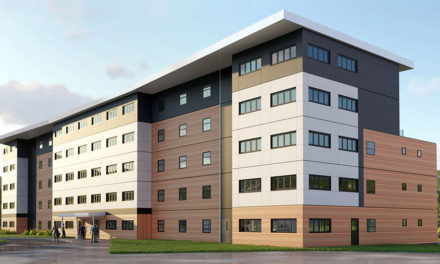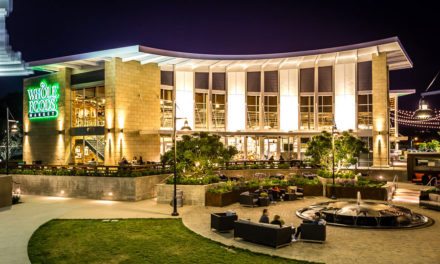Rooftop penetrations of newest Smithsonian museum installed with structural thermal breaks to protect artifacts, conserve energy
by Schöck
May 9, 2019
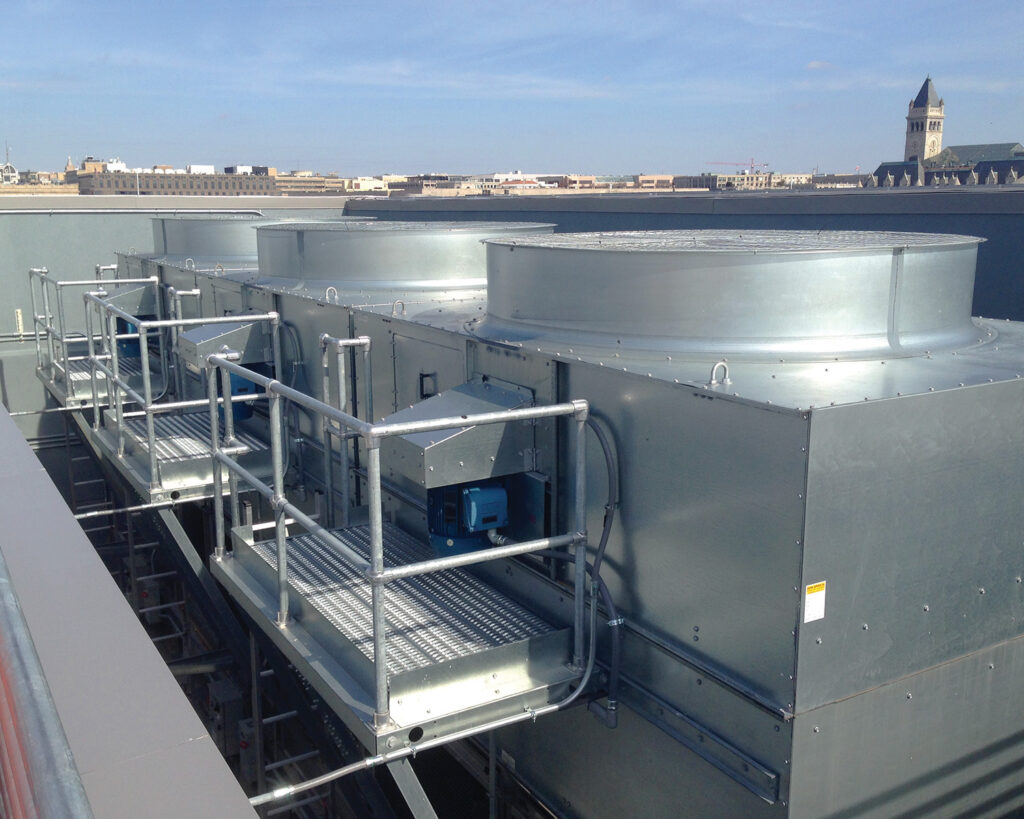
Four STBs at each of four steel rooftop penetrations per cooling tower prevent thermal bridging between exterior and interior environments while supporting loads. Photo courtesy of SmithGroupJJR
The National Museum of African American History and Culture provides a sensitive environment that balances energy efficiency and comfortable humidity levels against the need to protect priceless artifacts from the damaging effects of interior condensation. To help achieve this delicate balance, rooftop penetrations through the building envelope were insulated from interior support structures using the latest in structural thermal break technology.
Preventing condensation in humid interiors
The National Museum of African American History and Culture (NMAAHC) is the first Smithsonian museum to aim for the prestigious Leadership in Energy and Environmental Design (LEED®) Gold certification. It is also the first to incorporate structural thermal breaks (STBs) as part of an over-arching conservation strategy.
“Although energy efficiency is high on the museum’s priority list, protecting the collection is paramount. The textiles, woods, and other similar organic materials are very sensitive to temperature changes,” said Marcus Wilkes, SmithGroupJJR Principal, adding, “Museum environments, like NMAAHC, often require 50% relative humidity, which puts pressure on the envelope that other building types don’t typically face. We therefore pursued thermal break solutions, more to combat condensation than for energy efficiency, but both were important.”
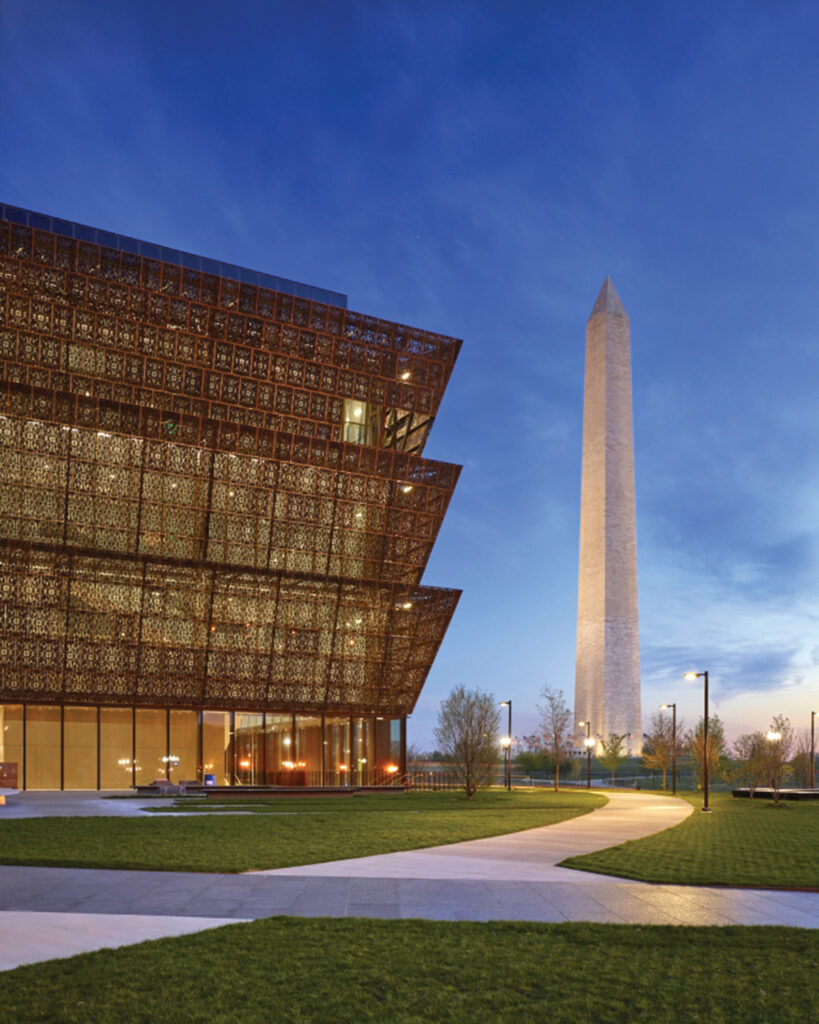
The three-tiered corona of the National Museum of African American History and Culture symbolizes faith, hope and resiliency.
Solving museum mold problems with structural insulation
According to Wilkes, the biggest risk to a museum’s “mission critical” function, from a building envelope perspective, is thermal bridging, in which structural concrete or steel penetrations such as at rooftop connections, canopies and balconies conduct cold through the insulated building envelope and dissipate it into the warm interior environment during winter months. In addition to wasting energy, these chilled penetrations can form condensation on the warm interior side of the building envelope, especially where humidity is sufficiently high enough for the exposed cold structure to reach the dew point, such as at a museum. As a result, mold can grow on cold surfaces, threatening building occupants and the museum’s collection, years before it becomes visible on interior walls and ceilings.
SmithGroupJJR oversaw the building envelope, or façade exterior, which called for “being diligent about the insulation and membrane continuity, and some heroic detailing” to prevent thermal bridging. The firm designed the façade to provide continuous insulation. However, a major design change about three quarters of the way into the documentation process introduced new risks and challenges. “At the last minute, we had to swap out a chilled water connection with rooftop cooling towers, so we suddenly had an unprotected piece of structure on the roof we hadn’t accounted for that was a serious thermal bridge at a load bearing condition,” Wilkes said.
The resulting rooftop structure is a composite construction in which the steel truss frame is overlaid with poured concrete and topped by a membrane and insulation. The building’s cooling towers are supported by steel posts penetrating through the roof’s insulation. It is at these penetration points where the building is most vulnerable to thermal bridging.
Exhibit space lies directly below the roof’s cooling towers, so any potential for thermal bridging had to be eliminated to protect the collection. Structural thermal breaks (STBs) provided the solution to the problem. “They [STBs] were the only option,” Wilkes said.
SmithGroupJJR specified Isokorb® STBs from Schöck to simultaneously insulate and support the cooling tower support columns where they penetrate the building envelope. Wilkes had first heard about STBs at a conference several months prior to the NMAAHC commission. “I kept the product at the back of my mind, and when this unique situation surfaced, the STB seemed like a happy marriage.”
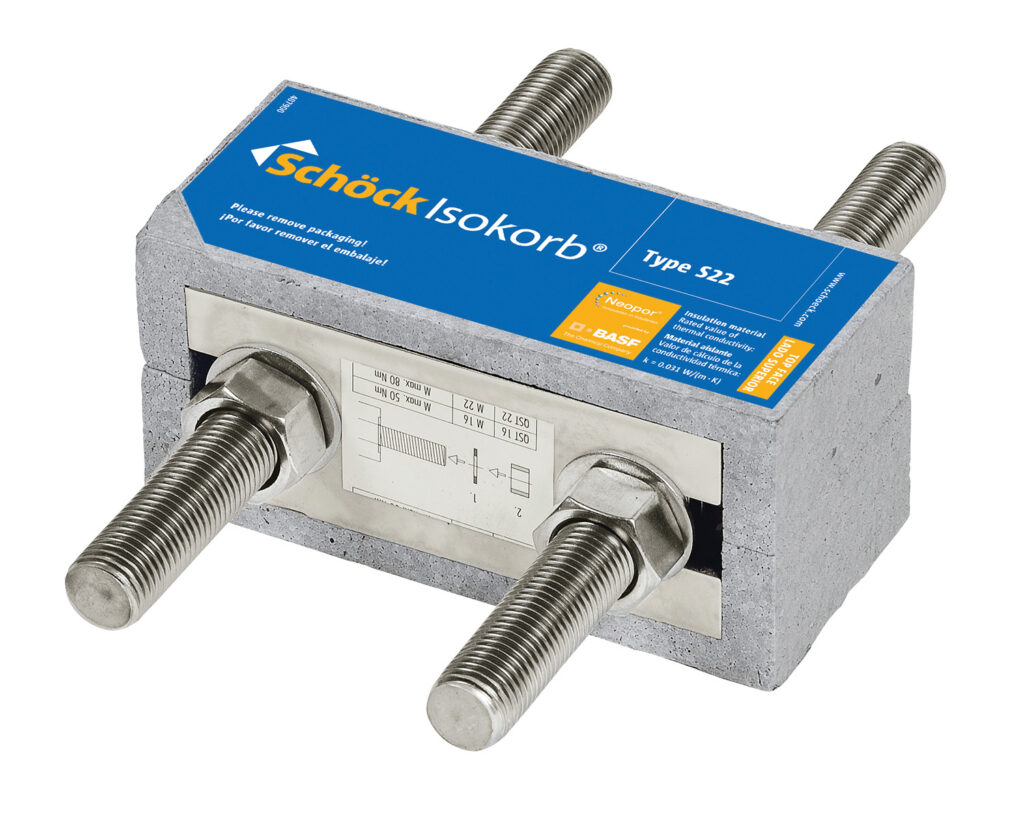
Isokörb® Type S22 structural thermal break is a load-bearing thermal insulation element for steel structures consisting of insulation foam held under compression with bolted stainless steel rods between two end plates.
Insulating while supporting loads
Schöck engineers assessed factored loads from the self-weight of the cooling towers and the wind at roof level to determine the number of STBs required to attain continuous insulation and support throughout the roof structure.
The Isokorb® Type S22 specified is a load-bearing thermal insulation element for steel structures that accommodates normal and shear forces. A block of Neopor® insulation foam 2-3 inches thick forming the thermal break is held under compression with high-strength bolted stainless steel rods between two end plates. Steel STBs are oriented horizontally for canopy and balcony penetrations, but vertically in this rooftop application.
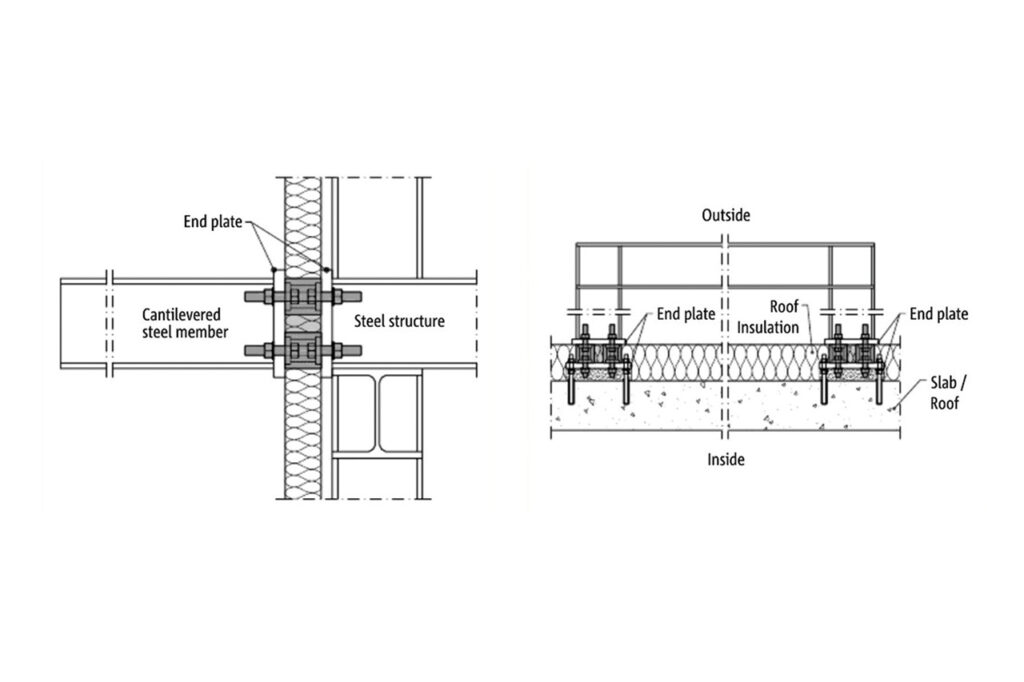
Diagram (right) shows vertical orientation of steel structural thermal breaks at NMAAHC rooftop as opposed to typical horizontal orientation (left)
The structural moments at the rooftop are transferred and the load of the cooling tower is transmitted by the STBs which are arranged in a quad pattern of four modules at each of four penetrations through the roof, for a total of 16 STBs per cooling tower.
By reducing thermal bridging, STBs prevent the building’s roof columns and beams from chilling interior cavities, which could create condensation and encourage mold growth that would ultimately threaten the museum’s collection. The energy savings also afforded by the thermal breaks reduce heat loss at each point of penetration by up to 50 percent, contributing to sustainable design and NMAAHC’s LEED certification goals.
Pushing the insulation envelope
In addition to the significant challenges of designing to LEED® Gold standards, the unprecedented physical form and performance demands of The Museum of African American History and Culture required designers to maintain the humidity required to preserve artifacts, while preventing associated condensation and mold. By incorporating structural thermal break technology as part of its conservation strategy, the Smithsonian created a signature work of international acclaim that meets specialized requirements without compromise.
About Schöck
The Schöck Group’s primary focus is on the development of ready-to-install components that are part of the structural design and that make a substantial contribution to building physics, for example by minimizing thermal bridges or preventing impact noise in buildings. Our main product is Schöck Isokorb® – a load-bearing thermal insulation element preventing thermal bridges on cantilever elements, such as balconies, parapets, access balconies or canopy roofs. With more than 12,000 standard types and solutions for use in concrete, steel and wood, Schöck is the leading specialist in this sector, both for new construction and for renovation projects. Other business areas focus on reinforcement technology for industrial, tunnel, bridge and infrastructure construction or building power plants.
*Neopor® is a registered trademark of BASF Corporation.


